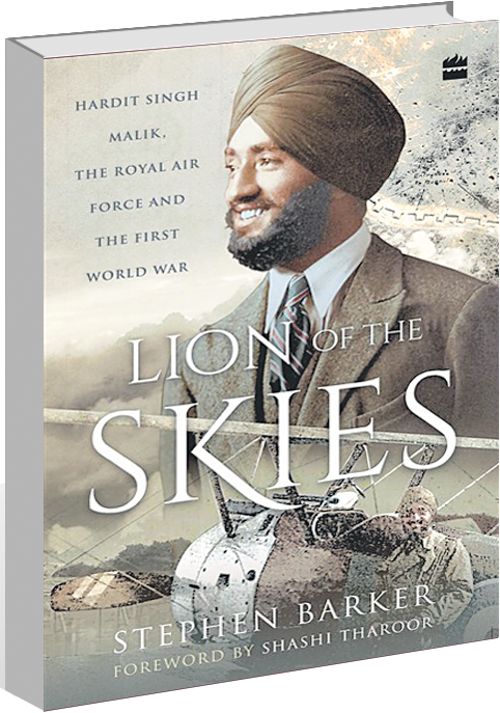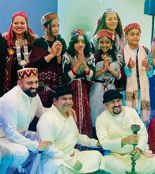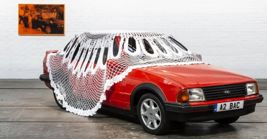Lion of the Skies: Hardit Singh Malik, the Royal Air Force and the First World War by Stephen Barker. HarperCollins.Pages 231. Rs 599
Book Title:
Sqn Ldr Rana TS Chhina (Retd)
Before World War I, Indians were not allowed to be commissioned as officers in the fighting services. The war, however, acted as a catalyst for change, and by 1919, a few Indians had been granted the King’s Commission as officers in the Indian Army. The earliest amongst these was a batch of cadets commissioned from Daly College, Indore, which included, among others, the individual who would later rise to become the first Indian Chief of Army Staff, and later Field Marshal, KM Cariappa. However, these were not the first Indians to see active service as officers in a combatant arm. The honour for that landmark achievement goes to the subject of this book: Hardit Singh Malik.
Malik was the son of Sardar Mohan Singh, a wealthy contractor from Rawalpindi. He was studying at Oxford when the war broke out. Unable to secure a commission in the army, he went on to serve as a volunteer with the French Red Cross on the western front. He was offered a commission in the Aeronautique Militaire by the French. When he told Francis Urquhart, his former tutor, about it, the latter wrote to General David Henderson, the head of the Royal Flying Corps (RFC). In Malik’s own words, he told the General: “…how scandalous it was that although I was a British subject, the British armed forces had no use for me, while the French were willing to enlist me.”
While this account by Malik was not entirely accurate, it did lead to his entry into the RFC in early 1917. Malik went on to see active service in both France and Italy during the war, perhaps the only Indian serviceman to have done so. One of his flight commanders, with whom he formed a close relationship, was the famous Canadian air ace “Billy” Barker, VC, DSO & Bar, MC & Two Bars. However, although he was commissioned as an officer, his commission was an “honorary” one.
While there are already two books about Malik — his own autobiography, ‘A Little Work, A Little Play’ (2011) published posthumously, and ‘Skyhawks’ by the veteran journalist Somnath Sapru (2006) — this book adds substantially to the information previously available on the life and times of India’s pioneering combat aviator. It not only provides a detailed account of Malik’s active service as a fighter pilot in the skies over Europe during the Great War, but it puts this into the larger context of the challenges faced by young Indians in the racially charged atmosphere of the times.
One of the larger issues at stake for India from 1917 onwards was the “Indianisation” of the officer corps. As the name suggests, there was an ongoing demand for allowing Indians to become officers in the Indian Army (India still did not have an air force) and Malik’s case was central to the Indianisation project. The author encapsulates the various arguments and debates around the subject using previously untouched archival material.
Malik had a long and illustrious career after he returned to India at the end of the war with two German bullets in his leg. which he carried till the end of his days. Nominated to the prestigious Indian Civil Service (ICS) in 1920, he became one of the country’s leading diplomats after Independence.
Written in a style that is both easy to read and understand, this well-researched book is a welcome addition to the historiography of the Indian armed forces and the Great War.














